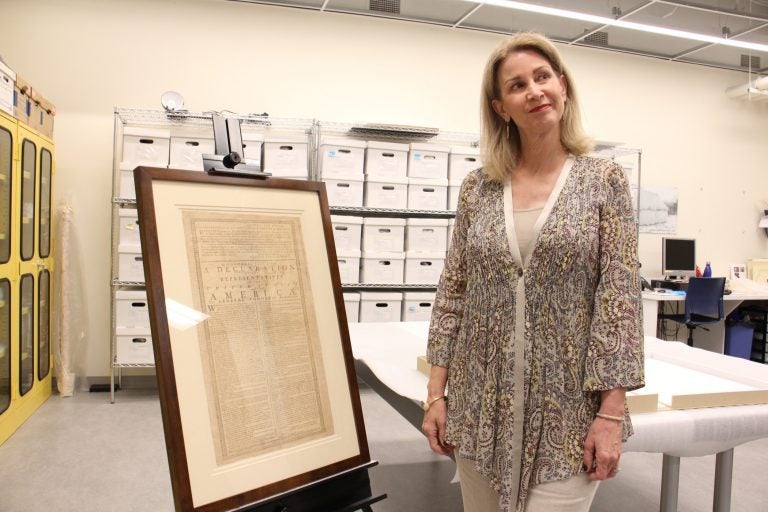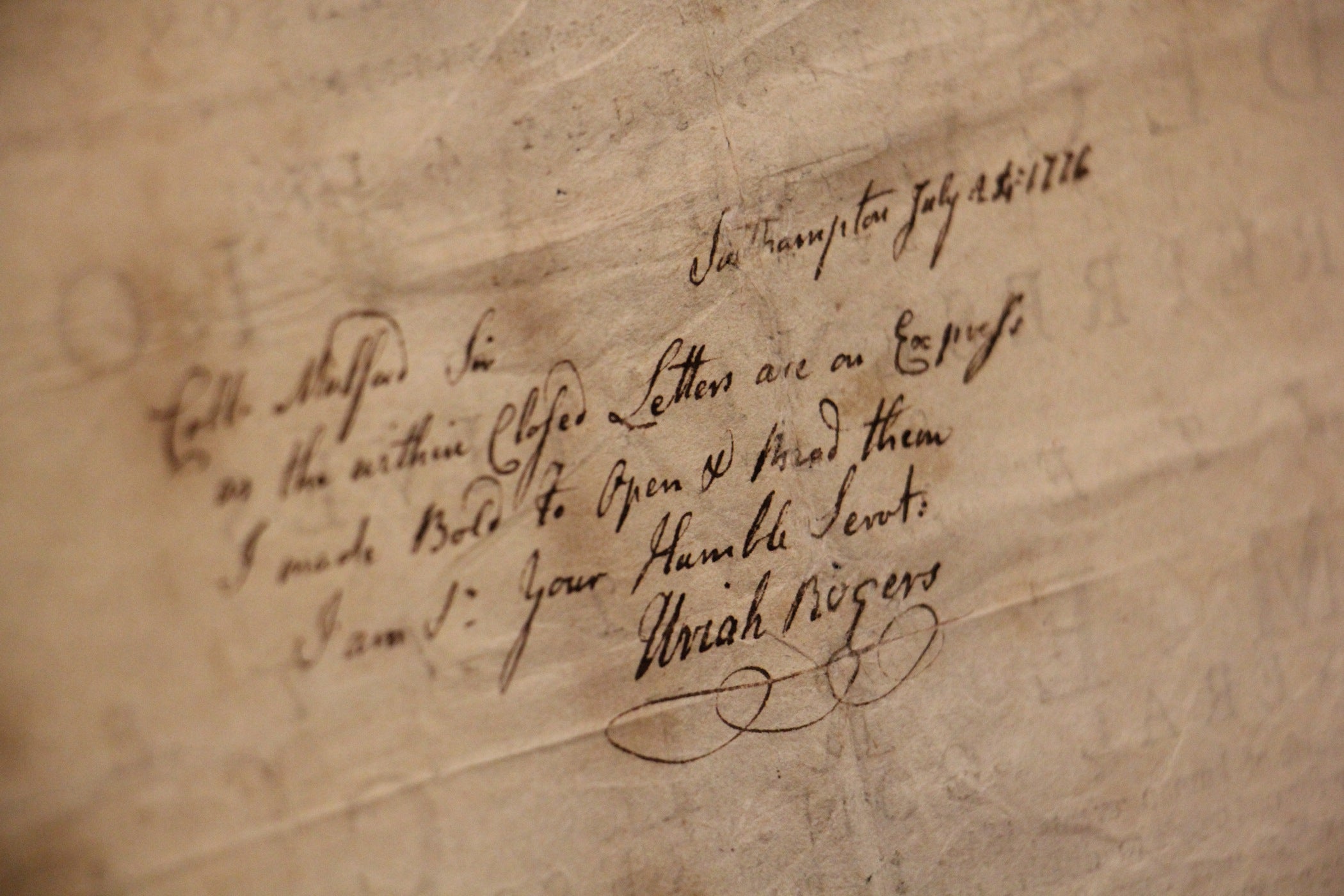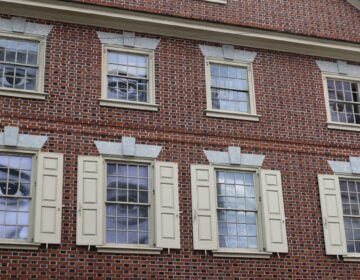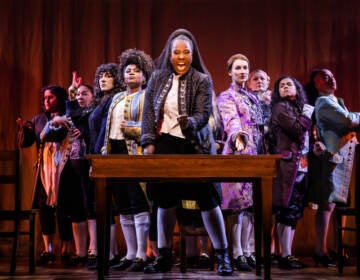Of the people, for the people: Rare broadside of the Declaration of Independence on view
A broadside printing was made before the official document was signed. For 241 years, it was never seen publicly, until now in Philadelphia.
Listen 2:04
Holly Kinyon, a descendent of John Witherspoon, recently purchased a first printing of the Declaration of Independence and has loaned it to the Museum of the American Revolution. (Emma Lee/WHYY)
It’s Independence Day, the day in 1776 when the American colonies officially banded together to break away from the British crown.
But the historic document on display in Washington, D.C., the one signed by 56 Founding Fathers, was not actually made until two weeks later.
In the time between the vote on the final language and the ceremonial signing, the Continental Congress rushed the text to printers in Philadelphia and New York, to run off faster, cheaper broadsides for the masses.
“The originals were all conceived and debated and adopted at Independence Hall,” said Holly Kinyon, a descendant of signer John Witherspoon. “Then these are sent out by horseback, immediately, to the regiments to get the word out.”
Kinyon recently bought one of those rare, original copies, printed July 9, 1776 — 10 days before the official version, with its calligraphy on vellum paper and 56 signatures.
The broadside printed by John Holt in New York was meant to be read, not displayed.

“We are looking at the same words on the page that people did in 1776 who did not know how this was going to turn out, making this very dangerous act of treason against the king,” said Scott Stephenson, CEO of the Museum of the American Revolution, where the broadside is now on display. “It has a real power.”
Stephenson is tickled to be the only public institution to ever show this copy. After it was pulled from John Holt’s press in 1776, it was sent to Col. David Mulford in the field with the Continental Army. It was handed down through descendants for almost 240 years until it surfaced on the market a year and a half ago.
There are only five known John Holt printings known to exist, and four of them are in museums. Kinyon, thinking about her ancestor Witherspoon, was moved by the document and the possibility of owning it. She snapped it up at auction for $1.8 million.
“It enabled me to connect back to my distant relative, Witherspoon, who was a signer,” she said. “It was profound for me the first time I saw it in D.C. at the National Archives, and I have to say it was much more profound to see it in person, to see this version of it.”
Although she owns it, Kinyon will not display this copy of the Declaration of Independence in her home in California. It’s not safe. In 1993, she said, her house burned down during one of Los Angeles’ many fires.
Instead, the document will live in an undisclosed, secure vault somewhere on the eastern side of the country.
WHYY is your source for fact-based, in-depth journalism and information. As a nonprofit organization, we rely on financial support from readers like you. Please give today.





